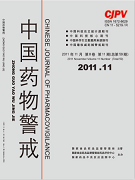|
|
Study of Acute and Long-term Toxicity of Chansha Capsules
LIU Hai-xia, ZHAO Jian, XU Ling-chuan, LI Zi-fa
2011, 8(11):
641-644.
Objective To observe acute toxicity in mice and long-term toxicity in rat of Chansha Capsules. Methods Given the extract of Chansha Capsules 10.8g/kg to the rats for 14 days, and calculated the maximum administration dosage. In the long-term toxicity test, rats were continuously fed with Chansha capsule at 19.98g/kg,9,99g/kg and 2.00g/kg a day for 180 days, and 30 days of stopping treatment, observe the male and female rats weight and appetite and feces, general clinical signs, the indication of hematology and blood biochemical analysis, organs coefficient, and the major organs and tissues observed the pathology. Results The maximum administration dosage of Chansha Capsules by ig administration was 45.8g/L in mice(equal to 92.3 times of clinical dose). In the chronic toxicity tests, blood biochemical analysis, organs weight absolute value and coefficient of organs in high-dose group exist significant differences, meanwhile, the indication of hematology significantly differ in both medium and high dose groups. The changes of weight, food intake, activities, the indication of hematology and blood biochemical analysis, organs coefficient and histopathology could completely recover in 30 days after stopping the drug. Conclusion Chansha Capsules administration by long-period might slightly injure the renal and liver function of rats, but the injury was reversible. It is safe to administer the prescribed dose of Chansha Capsules.
References |
Related Articles |
Metrics
|
